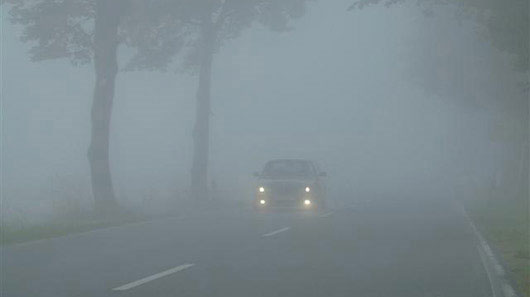What is fog? Why is there a fog?
On these winter days, Hanoi and the provinces in the early mornings or late dew dusk. Many people comment on the fog in recent years more dense than before. So what is fog? What does it have to do with environmental pollution?
Fog is the phenomenon of water vapor in the atmosphere condenses into tiny particles of water suspended in the air and reduces our vision.
Depending on the conditions of formation of each type of fog, people divide the fog into some of the following categories:
- Calm fog
- Radiation fog
- Mist evaporates
- Fog frönt .
Blindness is a phenomenon of gathering dust and smoke particles suspended in the air, reducing horizontal visibility. Strong blinds can reduce horizontal visibility to several hundred meters, even tens of meters like strong fog. Often due to local causes such as forest fires, environmental pollution
Fog and fog are dangerous meteorological phenomena. Especially for road, river, sea and air transportation, fog has caused many obstacles and no small losses.
Fog in our country often happens in the months from late autumn to late spring, most and most powerful in the winter months. Today the air environment is becoming more and more polluted so fog and blindness occur more and more intensity.

Causes of fog forming
Fog is a meteorological phenomenon that we often see and is also very interesting. However, fog is not always frequent. Basically, the fog that wants to form must meet some of the following conditions:
- Relative humidity of the air must be high.
- The air temperature is relatively low.
- Wind speed is weak or calm.
Fog often occurs when air from water, ponds, lakes, rivers and streams with relatively high humidity moves to areas with lower buffer temperatures.
Types of fog

1. Mist evaporates
Evaporation mist is formed when the water temperature is smaller than the temperature of its upper air layer; At this point, the evaporation hardly occurs because the vapor in the upper air layer is smaller than the water vapor in the water and thus the saturated state of water vapor in the air above the water cannot achieved. Conversely, when the temperature of the air layer above the water surface is smaller than the water surface temperature, the evaporation continues to occur. When the upper air humidity has reached saturation, the amount of excess condensate vapor forms mist.
2. Calm fog
Formed when a hot air mass moves on the under-cushioned surfaces cold; then in the air mass will form a heat and mist layer formed from the ground to the boundary of the heat-resistant layer. In fact, the cause of the formation of this type of fog is very diverse, it is divided into two types of main panic mist as follows:
a. Hot stellar fog: Occurs in the event that the air is colder when the mattress is colder than it is, the most common form of stratospheric fog, formed in a hot, humid atmosphere, such as a mass of air The sea zone when coming to the mainland has a lower temperature. In our country often see this kind of fog from the East Sea to the mainland in the cold months.
b. Cold- reflecting fog: Appears on a range of water when steam evaporates from warm water into cold air, on the land can be misty vapor evaporate from riverbeds, lakes, ponds .

3. Fog frönt
This type of fog occurs when there is rain going through the rain, thanks to the evaporation of rain drops, the air near the ground will be saturated, and the pressure will drop quickly, the air will expand the heat segment. and cold, so the steam near the ground is easily condensed into mist.
4. Radiation fog
This type of fog usually occurs in continental cold high pressure blades, occurring in the early and mid-winter periods when the air is relatively humid, low temperature and clear sky. The arrival time usually occurs in the middle of the night.
- In the case of calm wind, radiation fog forms in the air layer close to the ground (2-5 m from the ground) on the water and in the valley.
- When the wind speed reaches only 2-3m / s, the radiation fog develops into a thicker layer, which can grow to a height of 100-150m.
- Ground radiation mist usually dissolves with the heat-resistant layer in the soil close layer and usually does not last long when the sun appears.
- This type of fog forms in groups, if there is high radiation on the fog, it can enter into low-level clouds and it will last longer.
- Transformer robot
- Pretec introduced a 2 GB miniSD card
- Unique Christmas card style
- Food poisoning bacteria help treat pancreatic cancer
- Smoking, eating high cholesterol makes men die 10 years early
- Genetically modified bacteria can prevent obesity
- Human brain cells are successfully implanted in mice
- Free tuition for atomic energy students
- Flying along the first elevated railway line is about to run
- Storm No. 8 weakens into a tropical depression
- Arctic trailer
- Poisonous snakes up to 10 million years do not need to evolve
 Is the magnetic North Pole shift dangerous to humanity?
Is the magnetic North Pole shift dangerous to humanity? Washington legalizes the recycling of human bodies into fertilizer
Washington legalizes the recycling of human bodies into fertilizer Lightning stone - the mysterious guest
Lightning stone - the mysterious guest Stunned by the mysterious sunset, strange appearance
Stunned by the mysterious sunset, strange appearance